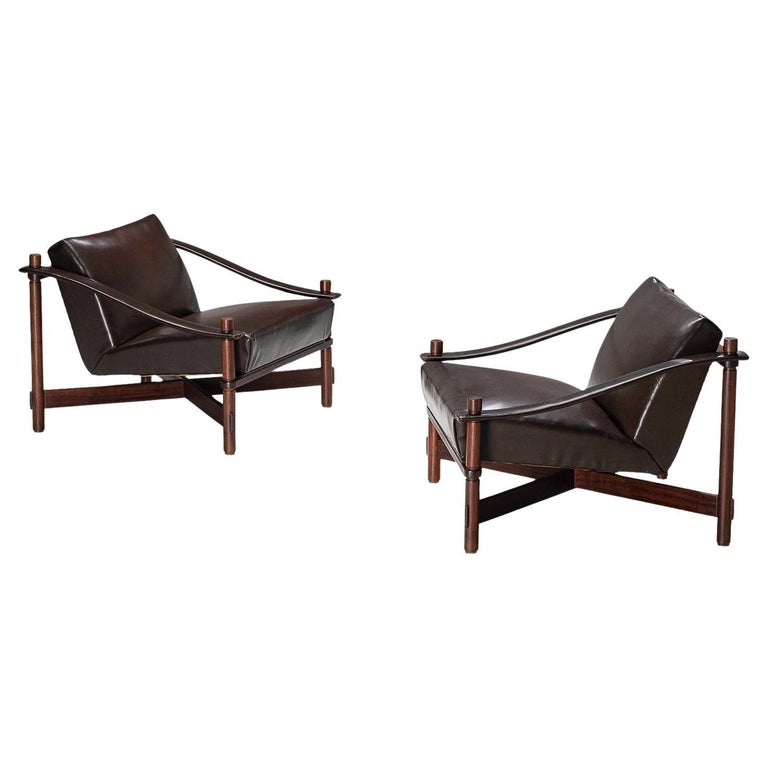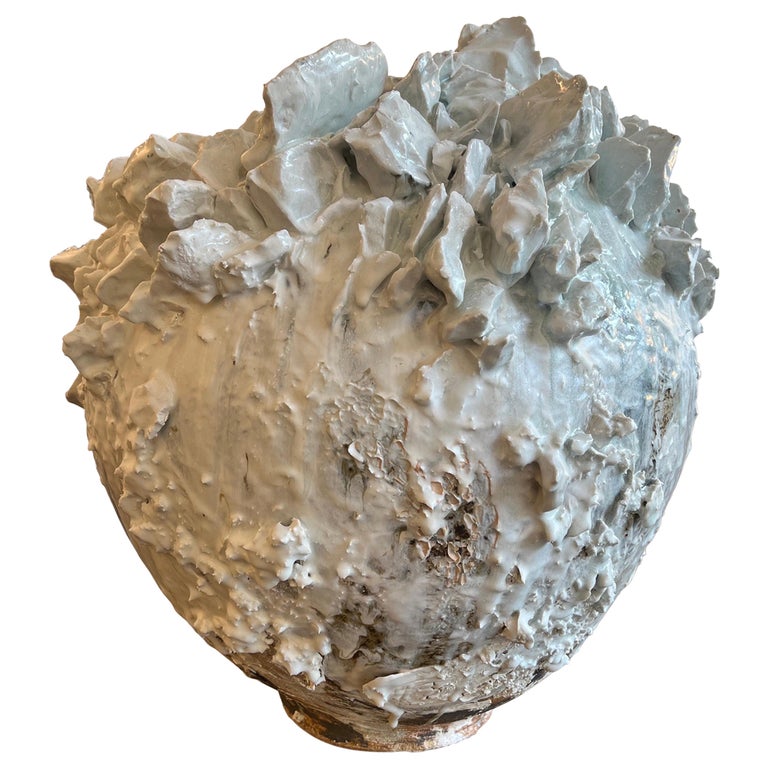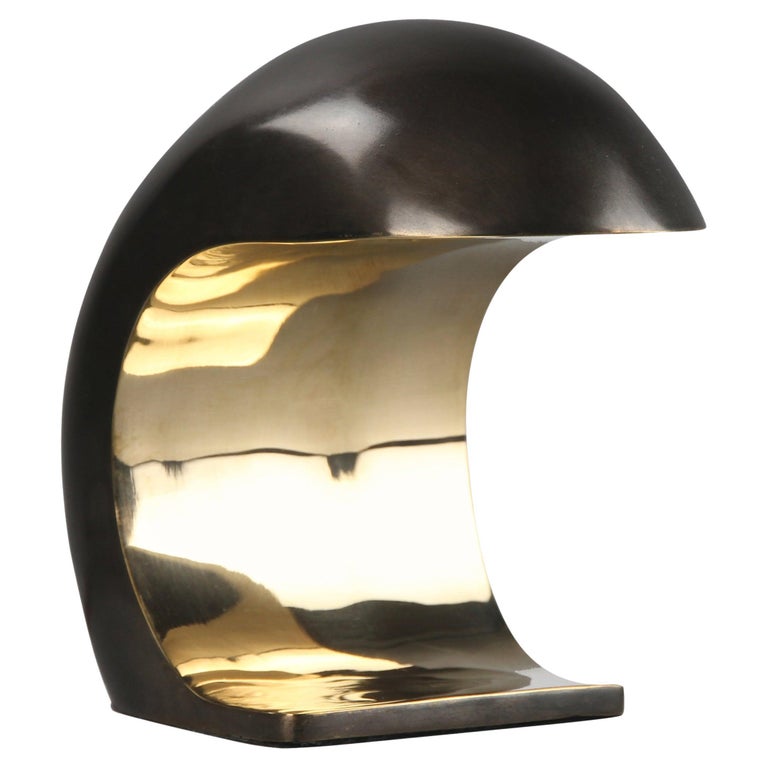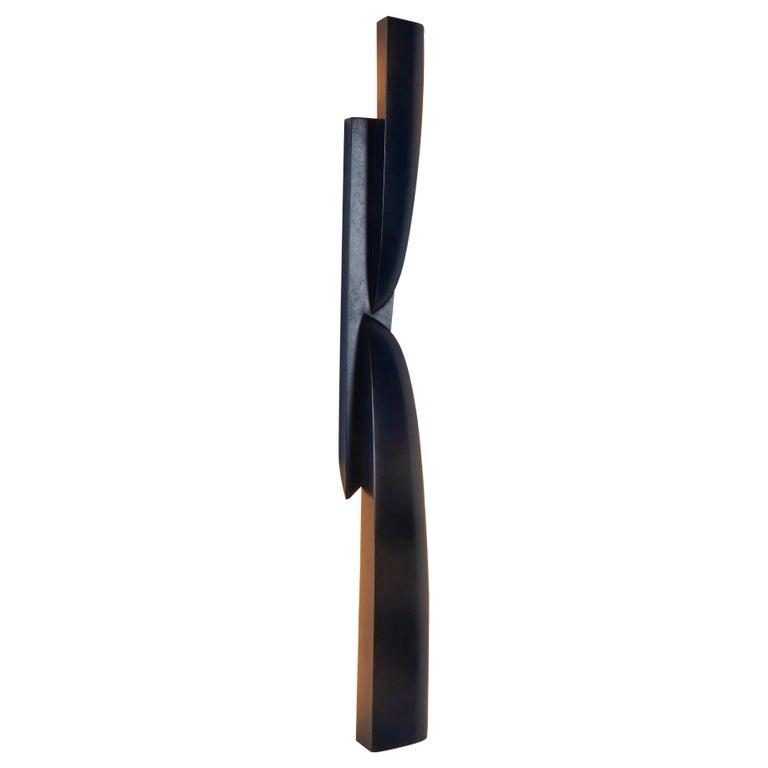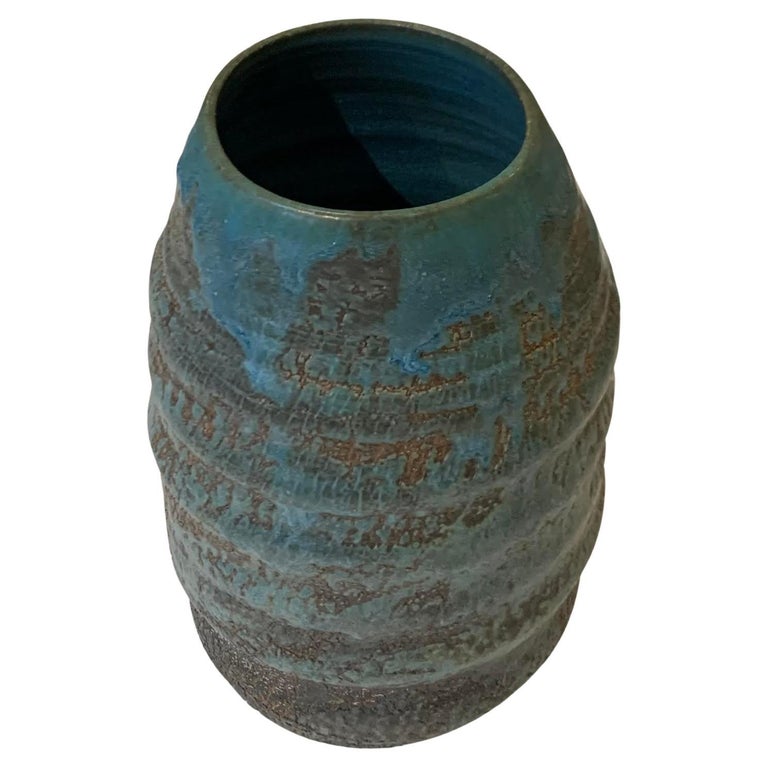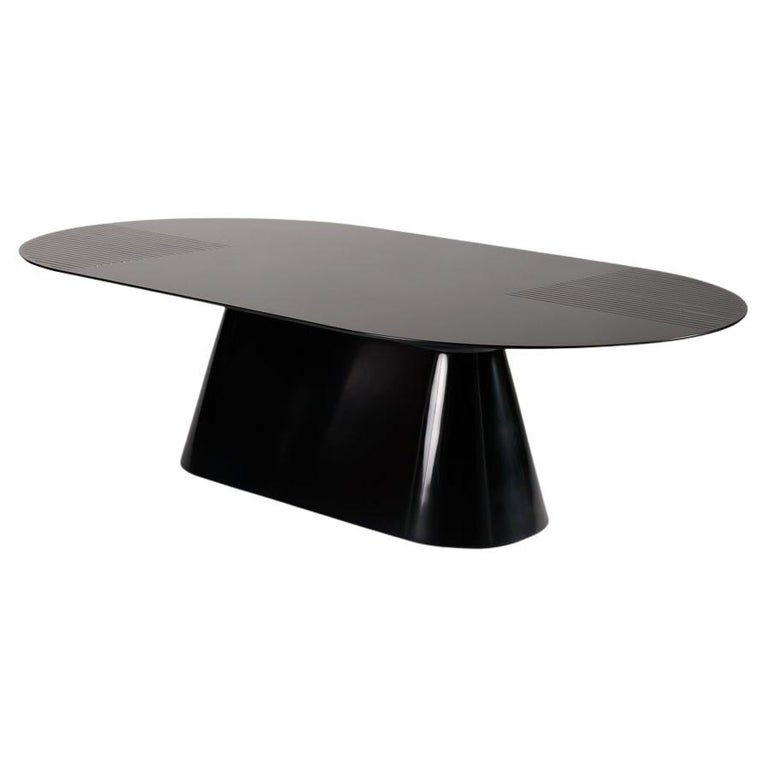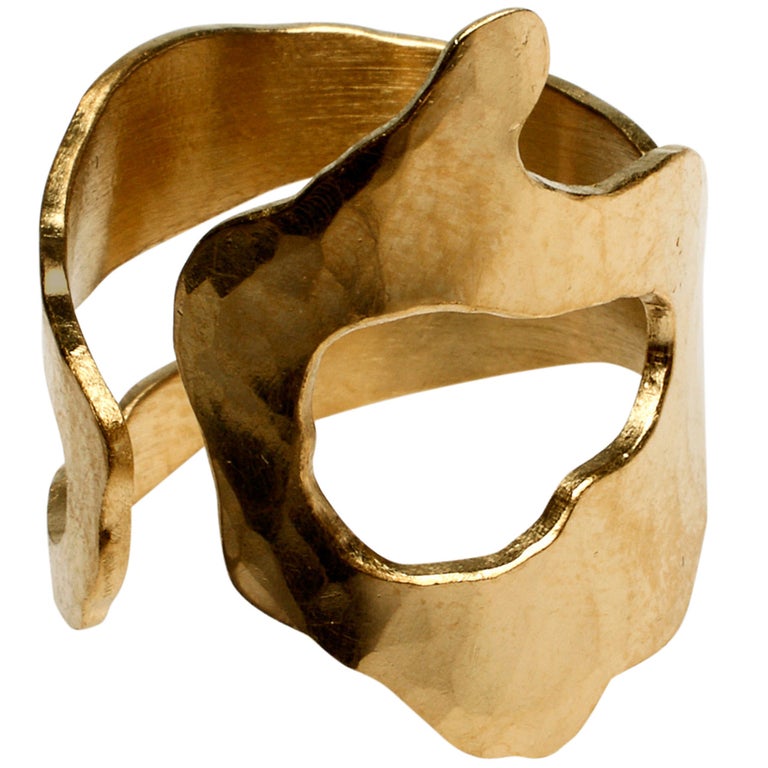November 3, 2024“Not all design should be about reimagining the past to create the future,” Nicole Hollis writes in her new monograph, Nicole Hollis: Artistry of Home, recently released by Rizzoli. “Sometimes we can design today for what will feel right tomorrow.”
When crafting forward-thinking contemporary residences, the San Francisco–based Hollis — who in 2023 was named Designer of the Year by the American Society of Interior Designers — rarely uses ornate European antiques, favoring rustic and textural French-country and Ethiopian stools and neck rests, and she cherry-picks mid-to-late-20th-century icons by a handful of modernist legends. In addition to the designs of Pierre Paulin, T. H. Robsjohn-Gibbings, Sergio Rodrigues, George Nakashima and Isamu Noguchi, Hollis has a particular affinity for the sculpturally innovative furniture of Wendell Castle and the biomorphic forms of Vladimir Kagan.
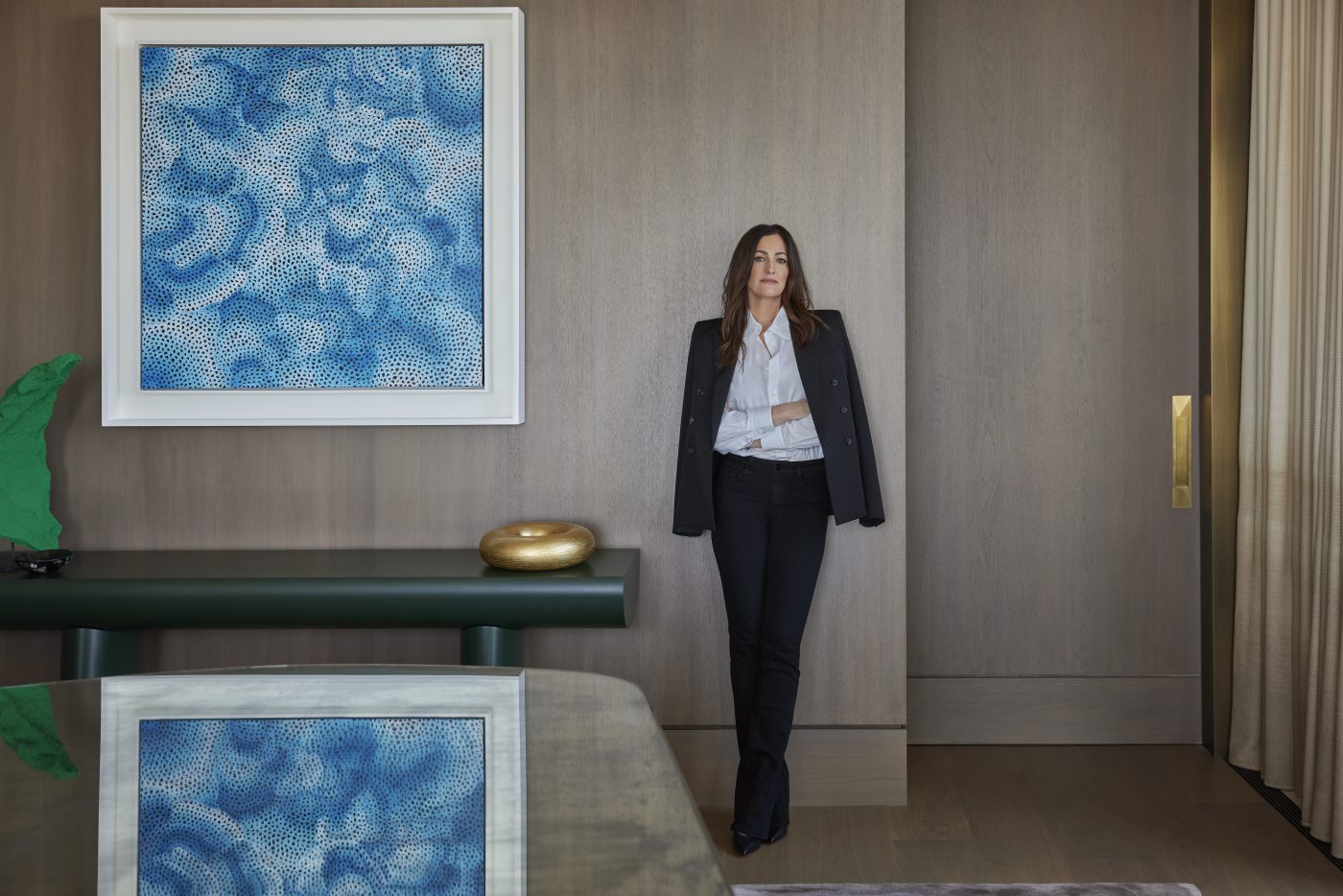
These 20th-century design classics mostly serve as well-integrated accent pieces for subtle and sophisticated interiors that showcase Hollis’s style signatures: custom upholstery and furniture designs, curated contemporary choices from 1stDibs galleries like Friedman Benda and MORENTZ, plus commissions from such artist-designers as Mattia Bonetti, Michael Anastassiades, Mauro Mori, Rogan Gregory, David Wiseman and the Haas Brothers.
Even within a relatively small footprint Hollis employs bespoke artistic touches. That is beautifully illustrated in the new book — which documents 11 recent interiors by the designer — by a two-bedroom pied-à-terre she redecorated in a 1929 New York City Art Deco skyscraper that once housed New York Telephone offices. In the entry gallery, for instance, she created an organic tableau by hanging a biomorphic cast-brass mirror by Mori on a white wall above a bespoke Damien Gernay console with an enameled top.

A stark counterpoint is presented by an adjacent alcove that she repurposed as a library, painting it a deep anthracite gray and adding illuminated shelves, a daybed of her own custom design and a copper Mori drum table. “This room had no window, so we sculpted it with light to create an interesting mood, a calming space to duck in and work or relax,” she tells Introspective.
The 10-foot-high living room, which had been painted an acid yellow, got a fresh, warm white-plaster finish on the walls, which she contrasted with charcoal linen curtains framing windows that overlook Chelsea rooftops and downtown vistas.

The handsomely appointed space, now done in a grayscale palette with wood and metallic accents, telegraphs luxury through its materials and textures. On a taupe wool-and-silk rug by Marc Phillips, a minimalist Christian Liaigre sofa in gray linen anchors a conversation area with symmetrically placed pairs of seating: 1950s wingbacks by Martin Eisler and Carlo Hauner, sourced through Nilufar, and 1930s armchairs by Jindřich Halabala. Hollis mixed these in with a Mori cedar side table, bronze side tables and lamps by Giuseppe Ostuni, Flos and Helle Damkjær.
A bar cabinet sporting a checkerboard of silver and Italian marble, by Paris Olympics cauldron designer Mathieu Lehanneur, adds a dash of Art Deco pattern. Artist John Procario’s sinuous bentwood chandelier echoes the shape of an acrylic-topped bronze coffee table by Bonetti.

“I am not overly attracted to ornate design,” Hollis says. “But Bonetti has boiled it down to softened curves and a purity of form that are emotionally appealing and so beautiful. He lives in Lake Como, and the top of the table looks like floating water.”
To ensure a clean look in the dining room, she designed low-backed chairs for the Van Rossum oak table, which is illuminated by a bronze Liaigre light fixture that resembles a dangling steel construction girder. On the wall, Studio Morning, a large-scale 2011 Wolfgang Tillmans color photograph of a spiral staircase, is one of several photos of interiors that serve throughout the apartment as focal points and add dimension to the home. “They make you feel like you’re looking into another room,” Hollis says.

In the primary bedroom, Marilyn Minter’s 2006 Spyder — an extreme closeup of a model’s glittery eyelid — enhances the glamor of the space’s alpaca-covered walls, which make the room feel warm even in the dead of winter. Hollis custom designed the curved-top white-leather headboard and the slightly bow-front oak nightstands. “This apartment is very rigid architecturally,” she says, “so getting a lot of soft edges in was important.” Further to that end, she added a round-cornered patchwork wooden bench by Raphael Navot from Friedman Benda, a curved-back Radnor sofa, a ring-shaped alabaster pendant by Atelier Alain Ellouz and a patinated-bronze coffee table by Gregory.

Whether designing the interiors of a Manhattan apartment, an ornate 1900s home in San Francisco or a glass, steel and concrete Silicon Valley home by 21st-century modernist architect Tom Kundig, Hollis believes that decoration and furniture should, she says, “be very complementary — very submissive even — to the architecture. And I like to keep interiors quiet, so the color palette of a room doesn’t compete with the stimulation of outdoor views: the greenery, blue skies and sunsets.”
Hollis developed this sensibility working on commercial retail and hospitality interiors for architectural firms, rather than as a residential decorator.
Raised in Jupiter, Florida, she moved to Manhattan in the early 1990s to study interior design at the Fashion Institute of Technology and began her career at the architecture practice of James D’Auria, which specialized in fashion retail.

In 1997, Hollis relocated to San Francisco. “Winter was bumming me out,” she says. “I needed a city with more of a connection to nature.”
Within five years, she was working for Starwood Hotels & Resorts, where she helped develop the design-led W Hotels brand, an experience she has since parlayed into more than a dozen hotel projects, like the Kimpton Angler’s Hotel, in Miami; the Kimpton Palladian, in Seattle; and the Kona Village Resort; in Hawaii. She then took on a role at Backen, Gillam & Kroeger, whose clients included wineries, Williams-Sonoma Home stores and high-end residences.

Hollis established her eponymous studio 22 years ago and cemented her connection with San Francisco by creating collections for local firms McGuire furniture and Phoenix Day. In 2012, she further solidified her Bay Area bona fides by purchasing a Victorian residence in the city’s Pacific Heights neighborhood that had once been the home of groundbreaking California architect Julia Morgan, who designed Hearst Castle.
“We painted the exterior black. Hopefully, Julia is not turning over in her grave from that,” Hollis says with a laugh.

She furnished the home with pieces by Anastassiades and Gregory, along with a contact sheet of outtakes from photographer Brian Duffy‘s session with David Bowie for the cover of the 1973 Aladdin Sane album, which she acquired through 1stDibs. “I gravitate to up-and-coming local artists,” she says. “I don’t have any dead artists and no blue-chip artists, except for one small Takashi Murakami. My ten-year-old wants it, but it’s staying in my room.”
Art plays a starring role throughout Nicole Hollis: Artistry of Home. The residences in it feature large-scale works by Murakami, KAWS, Yoshitomo Nara, YAyoi Kusama, Helen Frankenthaler and Donald Judd.

“We’re always looking at new ways to develop pieces that can stand the test of time,” she says of her collaborations with contemporary makers like Gregory, who are working at the forefront of the art-design movement. “Learning their capabilities and encouraging them to be a part of the creative process — there’s a lot of experimentation. And there is risk, but it’s exciting.”
Focusing on works produced through such partnerships also ensures exclusivity, Hollis candidly concludes with a smile: “A lot of my clients know each other, and they all want something that they are not going to see in someone else’s home.”

